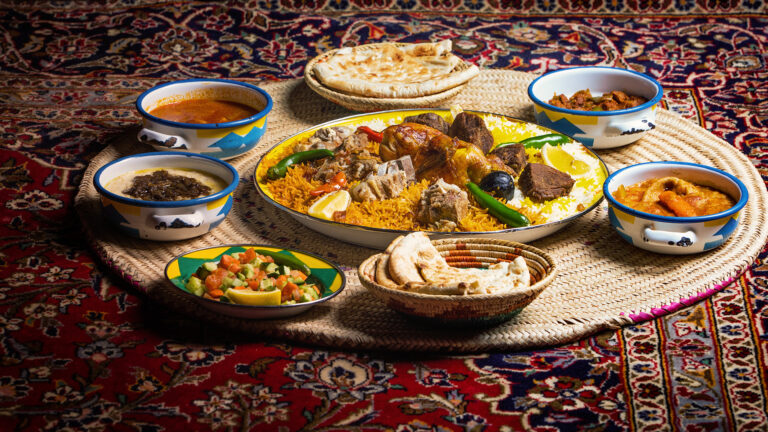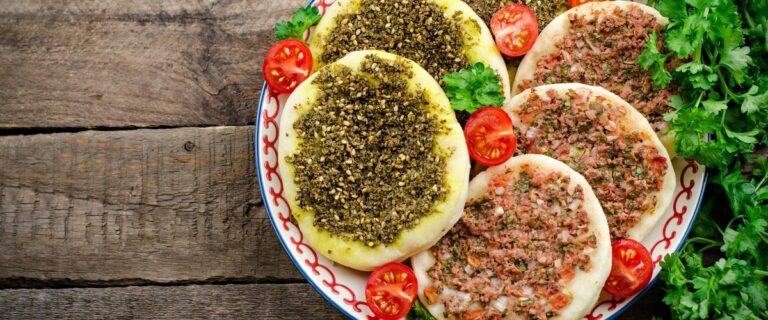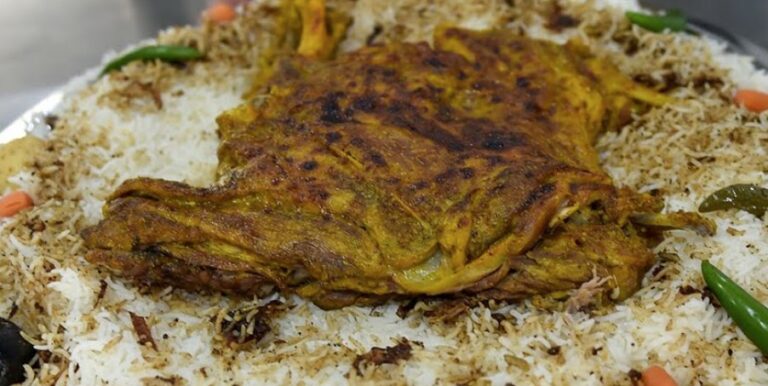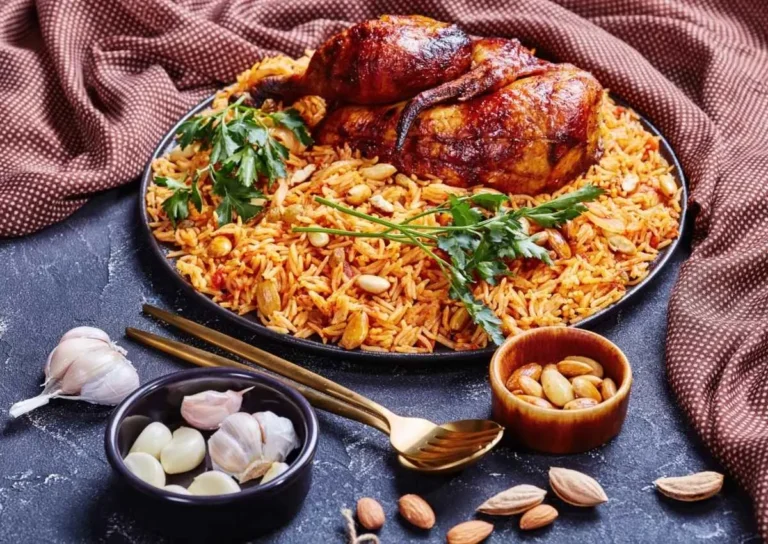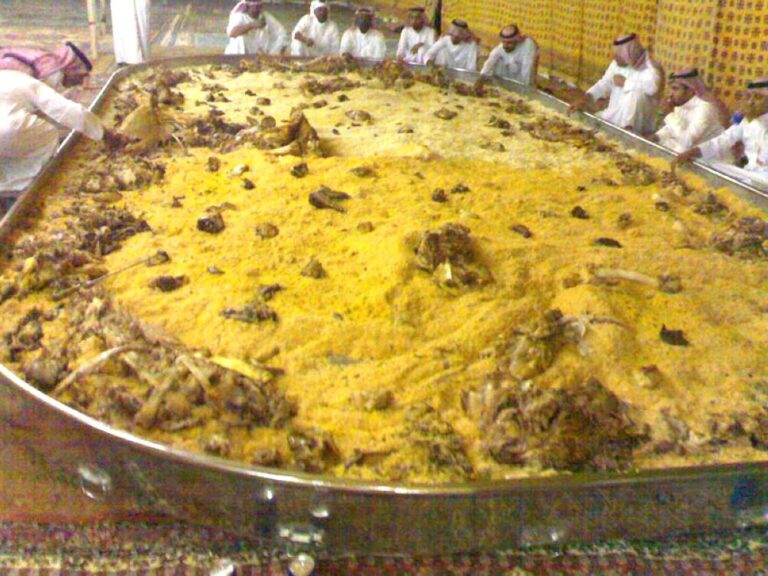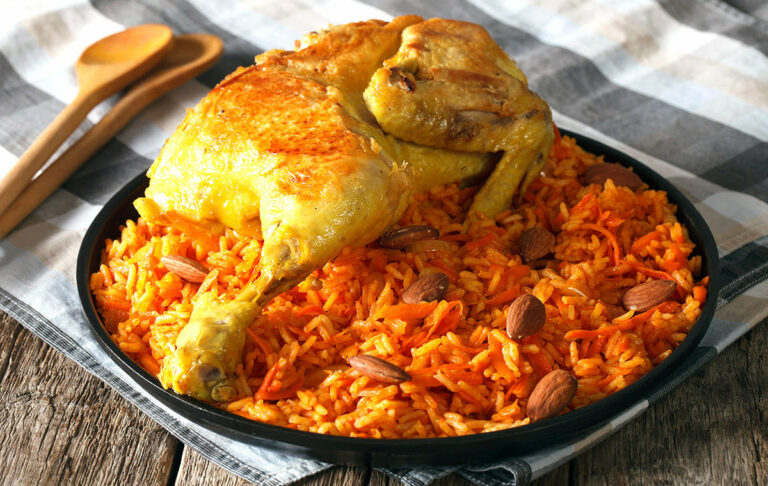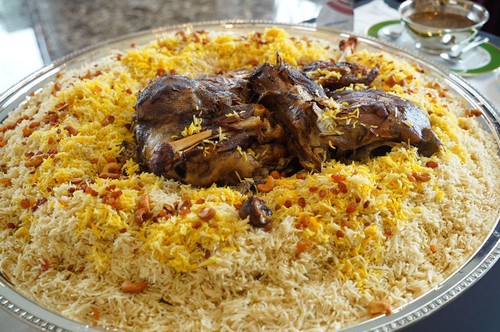Introduction: Exploring Saudi Arabia’s Culinary Heritage
Saudi Arabia is a country known for its rich cultural heritage and diverse cuisine. The cuisine of Saudi Arabia is a reflection of its history, geography, and traditional way of life. The country’s culinary heritage is characterized by a wide variety of dishes that are influenced by the Middle East, Africa, and Asia. The traditional dishes of Saudi Arabia are flavorful, aromatic, and often bold in taste.
Dish 1: Kabsa – The National Dish of Saudi Arabia
Kabsa is considered the national dish of Saudi Arabia and is a popular dish served during special occasions and celebrations. The dish consists of seasoned rice with a blend of spices, lamb, chicken, or beef, and vegetables such as carrots, tomatoes, and onions. The mix of spices, including cumin, cardamom, and cloves, gives Kabsa its unique taste and aroma. The dish is typically served with a side of spicy tomato sauce or yogurt.
Dish 2: Mandi – A Delicious Rice and Meat Dish
Mandi is another popular rice and meat dish that is commonly served in Saudi Arabia. The dish is prepared by marinating chicken or lamb in a blend of spices and then slow-cooking it over charcoal or wood fire. The meat is served over a bed of fragrant, long-grain rice, which is cooked in the meat’s juices and seasoned with cloves, cardamom, and cinnamon. Mandi is typically served with a side of tomato chutney or salad.
Dish 3: Saleeg – A Creamy Rice Porridge
Saleeg is a creamy rice porridge that is often served for breakfast in Saudi Arabia. The dish is made by boiling rice in milk until it becomes soft and tender, and then seasoned with butter, salt, and black pepper. Saleeg can be served plain or with toppings such as chicken or lamb, caramelized onions, and fried garlic. The dish is creamy, filling, and comforting, making it a perfect breakfast dish on a cold winter day.
Dish 4: Murtabak – A Meat-Stuffed Pancake
Murtabak is a meat-stuffed pancake that is commonly found in street food markets in Saudi Arabia. The dish is made by filling a pancake with minced beef or chicken and spicing it up with a blend of spices such as cumin, coriander, and turmeric. The pancake is then fried until crispy and golden brown. Murtabak is typically served with a side of spicy sauce or pickled vegetables.
Dish 5: Shawarma – A Popular Street Food in Saudi Arabia
Shawarma is a popular street food in Saudi Arabia, and it’s made by roasting marinated chicken or beef on a vertical spit. The meat is shaved off and then stuffed into a pita bread, along with salad and a variety of sauces such as tahini, garlic, or spicy chili. Shawarma is a tasty and filling meal that can be enjoyed on-the-go or as a sit-down meal.
Conclusion: Sampling the Rich Flavors of Saudi Arabian Cuisine
Saudi Arabian cuisine is a fusion of different culinary traditions that have evolved over centuries. The traditional dishes of the country are a reflection of its rich history, culture, and geography. From Kabsa, the national dish of the country, to the popular street food Shawarma, the flavors of Saudi Arabian cuisine are diverse, colorful, and delicious. Sampling these dishes is a must for anyone who wants to explore the country’s culinary heritage.

